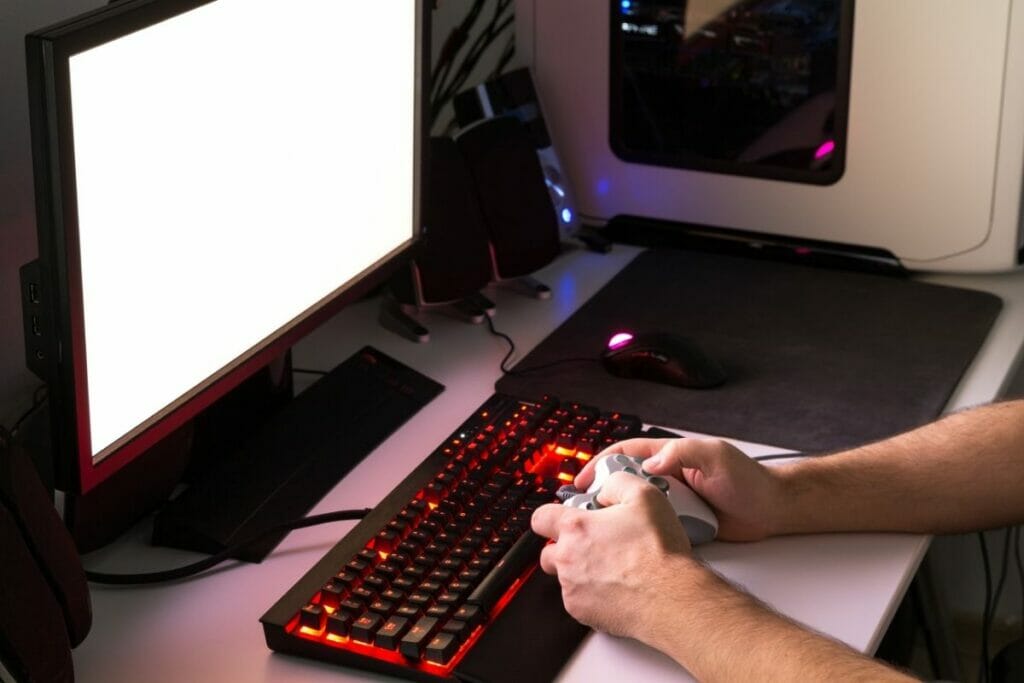Whether you are a fan of vintage games, enjoy playing with new technology, or just want the chance to rediscover some of those classic games from your childhood, DOSBox is a marvelous invention that allows you to enjoy all of the above, and have a lot of fun!

One of the main perks of DOSBox is that you can adjust your settings so that they take up the whole screen, and this can be ideal for helping you to enjoy a more immersive, authentic experience – you can play these games in the exact way that they were intended to be enjoyed.
Wondering how to go about making DOSBox full screen? Then read on for everything you need to know!
What Is DOSBox?
Before we proceed, it is useful to have an overview of just what DOSBox is, and how it can be used and enjoyed.
In the simplest terms, DOSBox is a free program designed specifically for use on Windows operating systems that was developed by the team behind DOS4GW – this is something which you may already be familiar with as it has now been superseded by DOS2Go – but you can still download DOS4GW here.
While it is now known for its vintage games and legion of gaming fans, DOSBox actually started life in a very different manner. In its original form, DOSBox was intended to provide a means by which developers could port old classic DOS games such as Commander Keen, Wolfenstein 3D, Doom, Quake, etc (see also ‘How To Install gzDoom‘). to modern computers.
These days, DOSBox has largely become popular amongst retro gamers due to its ability to run many older emulated versions of popular PC applications, including Microsoft Word (which DOSBox actually does better than other similar programs), Excel, Paint Shop Pro, PowerPoint, Photoshop, Quicken, Dreamweaver, Visual Basic, Lotus 1-2-3 and Access.
This varied range of options makes DOSBox one of the most versatile programs out there – all you need to do is find copies of the original game files.
These tend to be relatively inexpensive, and many are now classed as “Abandonware”, meaning that they are free to download and install – a little research will soon tell you which big names fall under this category, and these can be a great place to start.
If you are a gaming fan, you can also reach out to fellow gamers for advice on sourcing your titles.
One of the major appeals and advantages of using DOSBox is that it is relatively easy to install and configure compared to other emulation software like VirtualDub or NDSim, making it popular for beginners or those who are less computer savvy.
As an added bonus -and some would say best of all – a modern version of DOSBox, you’ll find that it costs very little indeed. In fact, the software itself can be used and enjoyed without any cost whatsoever: simply download and install from here.
DOSBox And The Retro Gaming Scene
There’s no doubt that when people think of classic gaming, their minds automatically jump to titles that came out years ago – and these are typically games that you enjoyed as part of your own childhood, giving them a certain nostalgia factor.

While the NES era is probably the most well-known part of video gaming history, the 1980s was also a major period of development and saw a huge number of innovative titles released for home consoles, PCs, and even handheld devices.
As time passed and technology evolved, many of these were banished to the back of closets, falling out of favor for better graphics and more elaborate technology.
The majority of these would never see the light of day again unless a group of dedicated individuals, and a community of gamers, set out to bring them back into the limelight – and this is where DOSBox can really help.
Although several major titles have fallen into obscurity over time, there are still some gems available today that everyone can enjoy without feeling like they’re missing out on anything at all.
These days, the DOSBox world is a vivid community of fans, and many are keen to share experiences, offer advice, and do what they can to ensure a hassle-free experience.
DOSBox Setup & Installation Process
To get started with DOSBox, you will need to start by downloading the software and installing it on your computer. Once installed, take a few moments to ensure that it works properly before you start using it.
One of your first priorities should be to change the directory into the folder where the files you downloaded earlier from the official site are stored. Once inside this folder, double-click the setup file you just downloaded, and follow the instructions that appear on the window that pops up.
In most cases, DOSBox is easy to use, and the software comes with plenty of detailed documentation to get you started.
When you launch DOSBox for the first time, you will be greeted with a simple interface in which you will be asked to press Ctrl+C to continue or to enter the name of the command line window from which you launched.
There will almost certainly be some messages displayed at this point, including the following:
“FATAL: Unknown CGA mode 0x0103. Your system may not be capable of running DOSBox”
This message relates to the fact that your display adapter doesn’t support 8-bit graphics modes. If you receive this error, then using a different video card often solves the problem. More commonly though, people find that switching their BIOS settings so that they no longer try to emulate CGA mode will resolve this issue.
If you want to play games that require 32bit CGA compatibility, however, you will probably need to obtain a copy of either Win32 v1.3a or Win32 v1.5a from here.
Both these versions of DOSBox include the necessary drivers for CGA modes as well as allowing you to select between 16 color and 256 color graphical effects when loading a game.
In general, you shouldn’t face any major problems while attempting to run DOSBox. However, if you’re planning on playing some of the more experimental games released over the last decade, you might benefit from checking out the FAQs in the ‘Community’ section over on the official website
How To Make DOSBox Full Screen
Once you’ve got everything working smoothly, you’ll want to make sure that the window size of DOSBox stays full screen when you load a game.
This is done through the DOSBox configuration options menu located under the help button in the top right corner of the main program window.
Clicking on the Configuration Options option should open up an additional submenu. From this point, you can choose to enable full-screen emulation (which turns off all menus and toolbars) or toggle between windowed and full screen setups.
The final thing to do after changing the DOSBox screen resolution is to restart the emulator. This should hopefully fix any issues with the graphics/sound functions within the game itself.
How To Play Games In A DOSBox Environment
Once you’re ready to start playing your favorite titles in DOSBox, there are a few things you should know about how it works before you begin.
Before you even attempt to boot up a game, you will initially be greeted by the same DOS prompt as the one shown above. The reason for this is that DOSBox essentially emulates a low-level environment for a PC operating system, such as MS-DOS.
At this stage, you won’t have access to any of the standard Windows controls, but instead only basic read and write commands are available.
You can also enter text strings via the keyboard, but since your computer isn’t actually connected to a monitor or printer, it’s unlikely that anything will print out.
With that said, this isn’t really something you need to worry about too much until you start getting into the actual game environments themselves.
Once you’ve booted up a game, several elements from your previous setup will be restored. For example, you’ll once again be able to change resolutions and turn sound and graphics off/on.
Some games may even automatically reload files from a disk or CD drive as needed.
After having played around with some games like Super Mario Bros 3, you’ll eventually get used to the way DOSBox handles situations like this.
Finally, before diving into a world where everything looks blurry and sounds terrible, remember that many modern video cards can output far higher resolutions than those found in old monitors.
In the majority of cases, returning to a high-resolution setting such as 1280 x 1024 should ensure that the entire screen fits comfortably inside your current monitor without needing to stretch or resize at all.
If you’re unable to achieve smooth gameplay in this manner, then consider upgrading to a newer monitor capable of displaying higher refresh rates and resolutions.
One final note: don’t use the Ctrl+ALT+F12 shortcut key combination to switch between full screen mode and non-full-screen mode. Instead, simply press Alt+Enter – it is a great time saver!
Final Thoughts
DOSBox is a fantastic invention and allows you to enjoy many of your favorite games from childhood on a modern system. With just a few tweaks, downloads, and updates, you can be enjoying vintage fun in no time – and at the touch of a button, you can enjoy this in full-screen glory!
